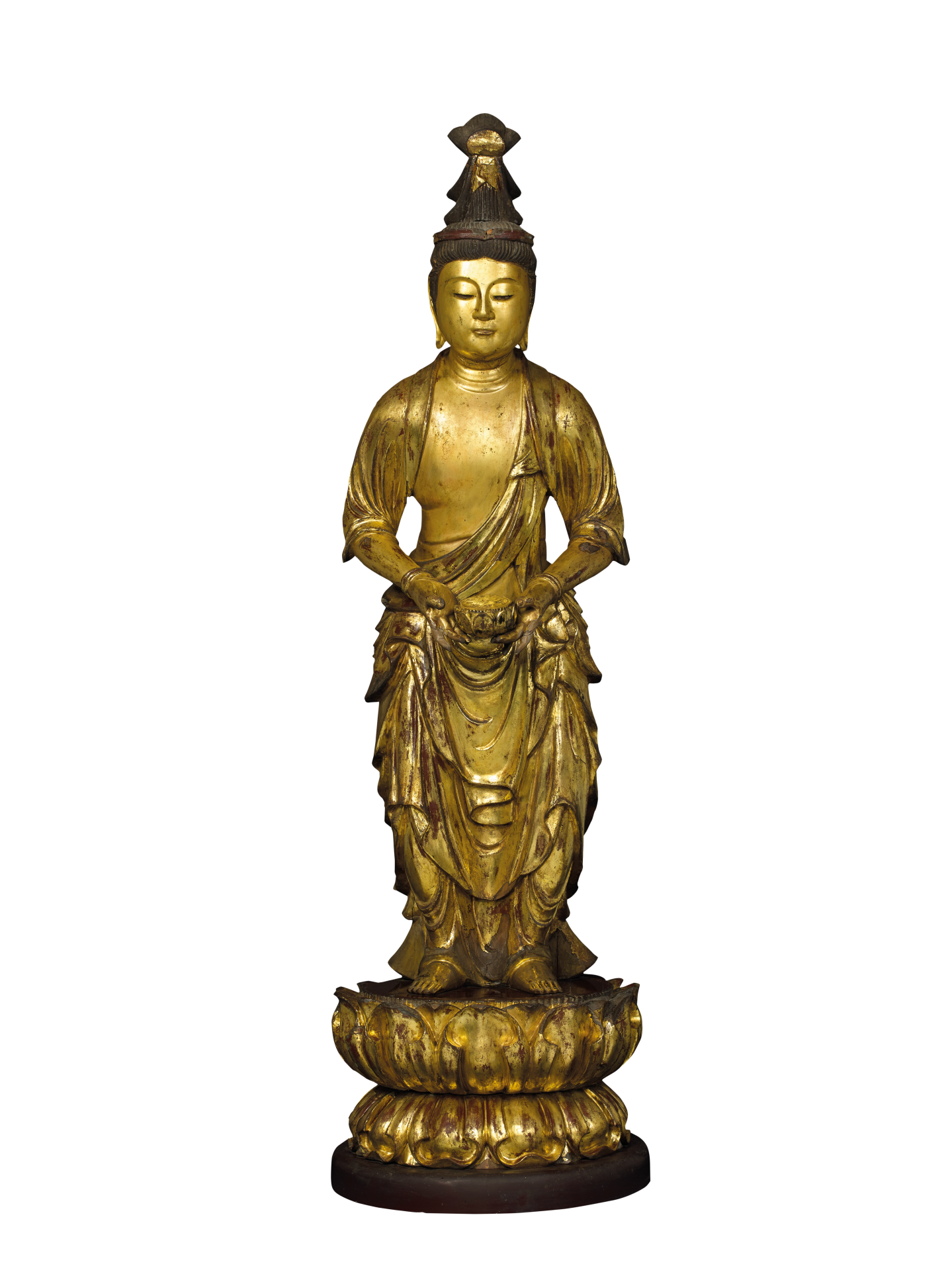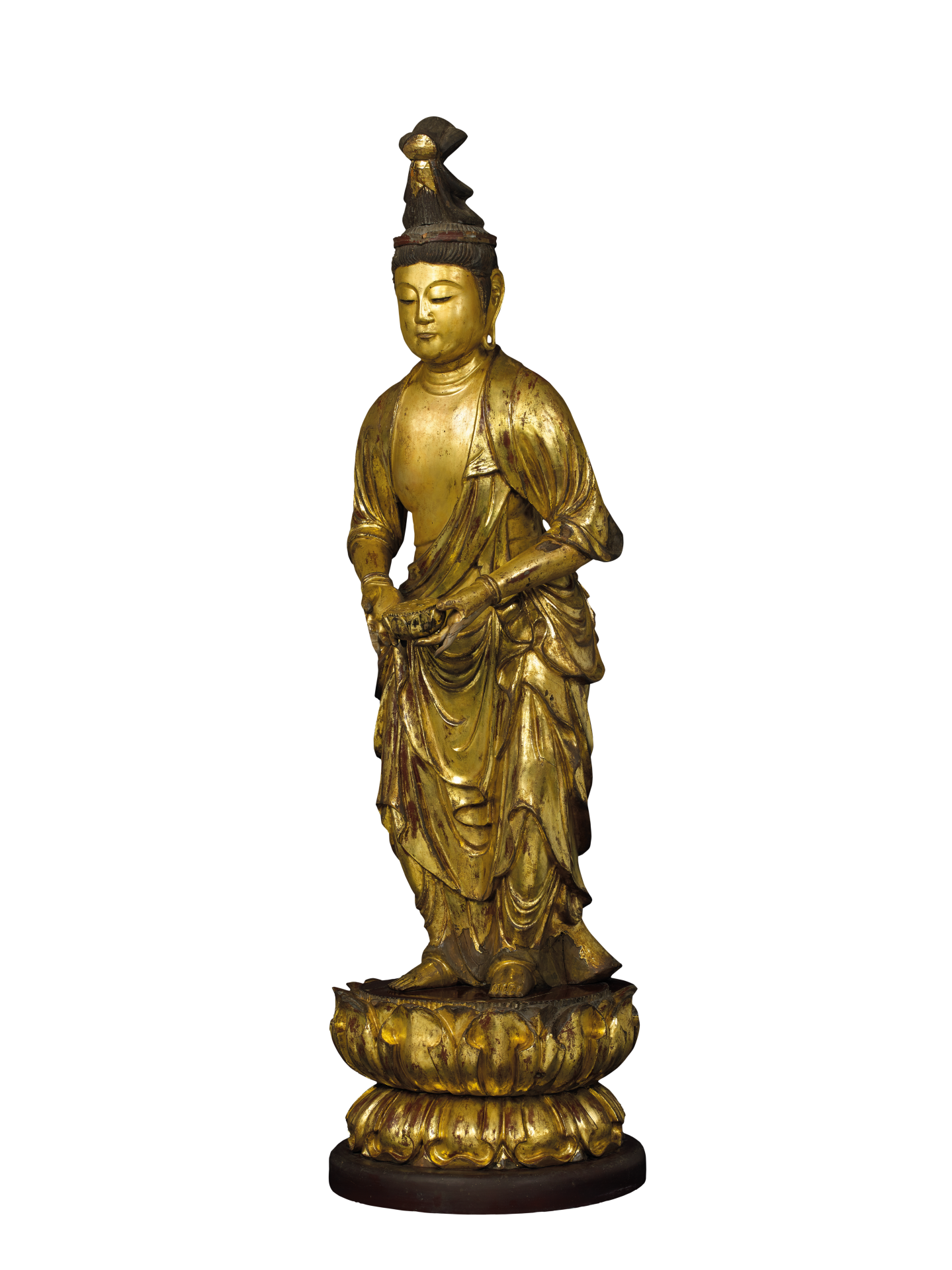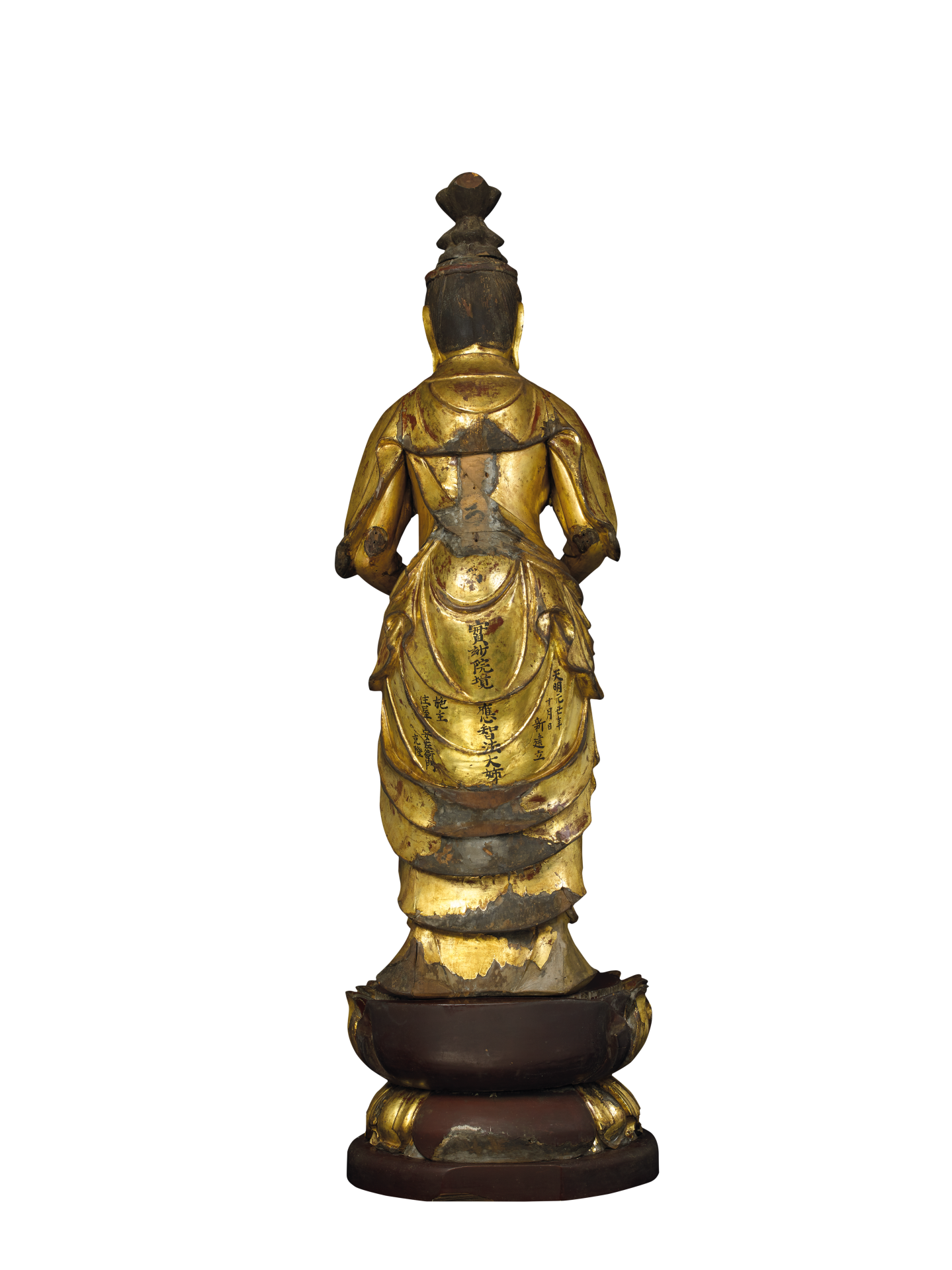Standing Raigō Bodhisattva
According to Buddhist texts of the Pure Land tradition, if a devotee practises the Pure Land way by constantly reciting the epithet of Amitābha Buddha with great devotion, on his deathbed Amitābha accompanied by Avalokiteśvara, Mahāsthāmaprāpta and other Bodhisattvas riding on clouds will come to guide him to take rebirth in the Buddhist paradise. While it is believed in Chinese Buddhism that in most cases the deceased will be greeted by the Holy Triad of the West or Avalokiteśvara and Mahāsthāmaprāpta, Japanese Buddhists of the Heian era (794-1185 CE) believed that when a devotee was dying, Amitābha joined by 25 Bodhisattvas would come to guide him to take rebirth in the Western Pure Land. Paintings or statuary portraying “Raigō of Amitābha and 25 Bodhisattvas” or Raigō Bodhisattvas thus emerged. These are subjects unique to Japanese Buddhist art.
This Raigō Bodhisattva has hands clutching a lotus in front of his abdomen, knees flexed and body slightly stooped in a bowing pose, indicating that he is greeting the deceased. He wears a tall topknot with hair minutely depicted. Only the base of the original crown remains. He has an oval face with plump cheeks, crescent-moon eyebrows, half-open downcast eyes, a small mouth with thin lips, a placid and tranquil countenance; a shawl around the shoulders and bangles around the wrists. He is standing on a double-lotus pedestal with thick broad petals. The right chest is left bare, exposing smooth and soft chest muscles. The waist is slightly contracted. The torso appears stout and heavy but the flexed fingers and delicate knuckles are wonderfully modelled to enhance the graceful gesture of the hands.
The drapery is formalised, but does not fully reveal the bodily structure. The masses of rich folds around the lower body in particular have completely concealed the legs, suggesting only some block shapes underneath the garment. Finally, the Bodhisattva statue’s back bears the Tenmei era mark (1781-1788), indicating that it was carved during the reign of Emperor Kōkaku (1779-1817) in Japan’s Edo Bakufu period (1603-1868).


